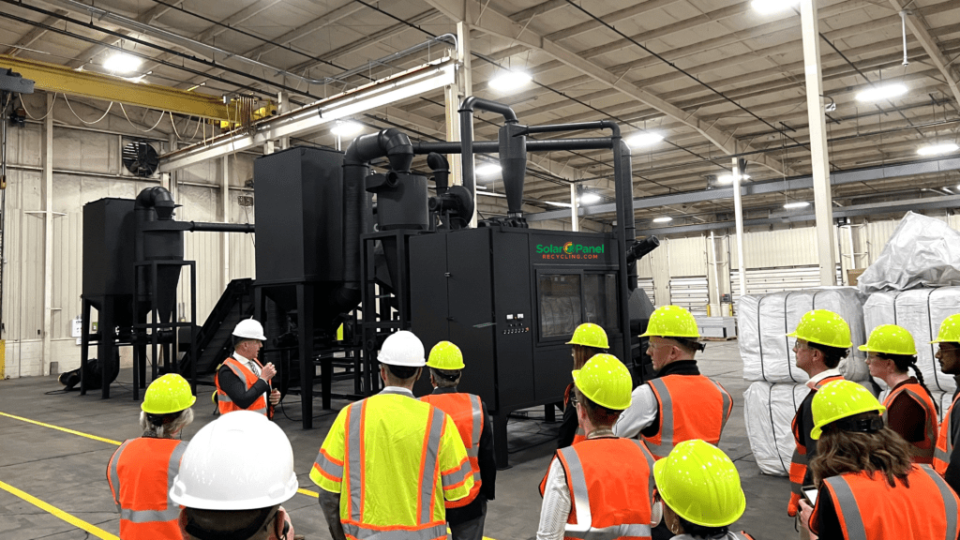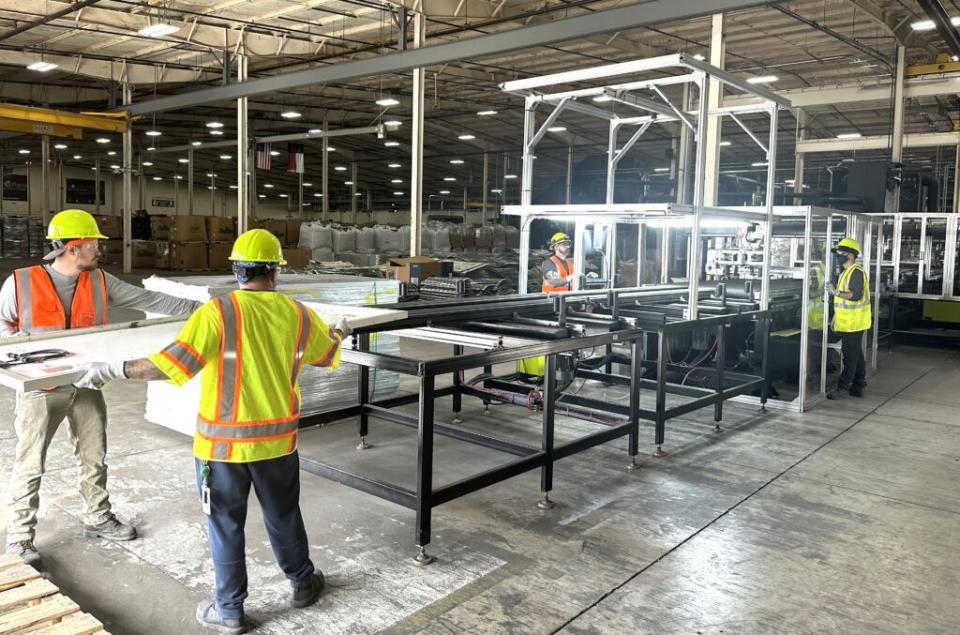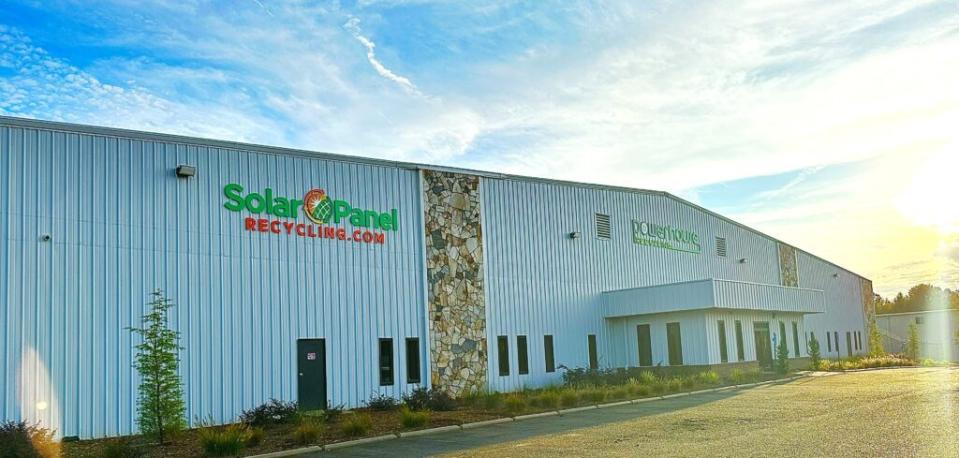The POWER Interview: Growing Importance of Solar Recycling
Waste from end-of-life solar panels and other solar-related equipment provides an opportunity to recover valuable materials, along with other benefits. The International Renewable Energy Agency said that by 2030, the cumulative value of recoverable raw materials from end-of-life panels alone will be about $450 million worldwide, which the agency said is equivalent to the cost of raw materials needed today to manufacture about 60 million new panels. Recycling this waste also means it is not being sent to landfills. Many solar-related components can be recycled, including glass, aluminum, copper, and plastics. Brett Henderson, CEO and co-founder of SolarPanelRecycling.com (SPR), recently provided POWER with insight into the market for recycled solar power components. Henderson addressed the challenges faced by the solar industry when it comes to more sustainable and economic practices, at a time when solar power companies are looking at ways to utilize more domestic manufacturing, and recycling of materials, to help solve supply chain issues. POWER: How do you perceive the market for recycled materials from the solar power sector?Henderson: The market for recycled materials from the solar power sector is poised for significant growth, driven by the increasing desire among manufacturers across various industries to incorporate recycled raw commodities into their production processes. This shift offers substantial value by mitigating supply chain variability and promoting the onshoring of the vertical supply chain. Additionally, it aligns with their environmental, social, and governance (ESG) goals, enhancing their commitment to environmental sustainability and circularity. [caption id="attachment_220818" align="alignnone" width="640"]

Brett Henderson, CEO of SolarPanelRecycling.com, provides a tour of the company's recycling center, highlighting its advanced technology for true recycling and extraction of core materials. Courtesy: SolarPanelRecycling.com[/caption] However, current market constraints stem from manufacturers' reluctance to adapt their processes to accommodate these recycled materials, often opting for virgin materials until a reliable and steady supply is available. This hesitation hinders the full potential of integrating recycled solar materials into mainstream manufacturing. As the solar industry continues to prioritize recycling over landfilling or incomplete recycling, the availability of clean commodities will increase. This, in turn, will provide manufacturers with a consistent supply, encouraging them to incorporate recycled materials into their processes. The expansion of this practice will not only open new markets for recovered solar materials, but also drive down recycling costs, creating a more sustainable and economically viable ecosystem for all stakeholders involved. But to make sure solar recycling remains meaningful, there needs to be a higher standard and strong regulations for what constitutes recycling. Extracting the most valuable material and then discarding the rest, should never count as recycling. That is just more of the extraction economy from which we want to transition away. [caption id="attachment_220821" align="alignnone" width="640"]

Workers from SolarPanelRecycling.com load a retired panel onto the artificial-intelligence (AI)-powered recycling line at the company's flagship facility in Salisbury, North Carolina. The AI logs the size of the panel, depth, of frame, and location of junction box, and then communicates this information to the recycling line. Courtesy: SolarPanelRecycling.com[/caption] Finally, there remains a significant need for education and outreach to fully realize the value proposition of choosing responsible recycling solutions over the cost-saving option of landfilling. Despite the solar industry's advancements, the unfortunate reality is that landfilling is still a more common choice than it should be in the utility, commercial and industrial, and residential sectors. This highlights a gap that needs to be addressed through more robust awareness campaigns and incentives to shift the balance in favor of sustainable practices. By continuing to emphasize the long-term environmental and economic benefits of recycling, we can hope to see a stronger adoption of these practices, ensuring that the solar power sector truly leads by example in sustainable energy production. POWER: Are you contracting with specific companies and/or utilities to ensure a steady supply of recycled materials?Henderson: Yes, we are actively contracting with specific companies and utilities to ensure a steady supply of recycled materials. Our mission is to advocate for circularity through true solar equipment recycling, which is only accomplished by clean commodity extraction from solar modules and reintroducing the materials back into supply chains. This relies on maintaining a high volume, steady stream of solar panels and equipment flowing into our recycling facilities located throughout the U.S. [caption id="attachment_220819" align="alignnone" width="640"]

The flagship facility of SolarPanelRecycling.com in Salisbury, North Carolina. Courtesy: SolarPanelRecycling.com[/caption] We achieve this through strategic contracts and partnerships that cover company-wide recycling for all projects, as well as on a project-by-project basis for developers, EPCs, O&Ms, asset owners, and utilities. We are always looking for new partnerships as a source of solar equipment for our facilities. We are proud to be named a recycler for EDP Renewables' recycling initiatives and to conduct large-scale recycling projects with Duke Energy and Texas Green Power, among many other regional and national O&Ms, utilities, and EPCs. Equally important, we have supplier contracts in place with manufacturers across a myriad of industries, consuming our cleanly separated commodities from our recycling lines. The notion that recycling is a 25-year-down-the-road issue is categorically false. New construction projects require immediate recycling solutions for breakage during transportation and installation. O&Ms have ongoing needs when panels fail or are damaged while online. Additionally, there is a clear necessity for large-scale recycling during major weather events or technology refreshes (repowering). By addressing these immediate and continuous needs, we ensure a consistent supply of clean commodities, thereby supporting the broader adoption of sustainable practices in the solar industry. POWER: Are you accepting materials from utility-scale solar installations and from residential and commercial and industrial sites? Is there a difference in the materials when it comes to which sector they come from?Henderson: The short answer is yes, we can accept any type of solar equipment from all types of installations. There is no difference in terms of materials to be recovered. The longer answer is a bit more complicated. That is because with residential sites, there is a challenge of logistics and costs of transportation with the lower volume of panels at one given site. But as we continue to become more localized with distributed recycling centers throughout the country, this will become more cost effective. Our goal is to make sure that not one piece of solar equipment ends up in a landfill. [caption id="attachment_220820" align="alignnone" width="640"]

A SolarPanelRecycling.com technician shows the clean glass that the recycling line extracted from retired solar panels. The glass can be re-entered into a supply chain. Courtesy: SolarPanelRecycling.com[/caption] POWER: Will the products you receive be repurposed for new solar power facilities? Are there other uses for recycled solar power materials?Henderson: During repowering (technology refreshes), we receive panels in working order with life left in them. In these instances, the unit can be put back online in a new solar facility that does not require a higher wattage per panel install. As for the recycling side, which is the bulk of our volume, there are some components and materials that can be reused in solar, but there are others, like silicon, that it is not currently possible to reinsert it back into the solar supply chain and instead the material needs to be repurposed for other uses. There is already research happening today to try to reuse end-of-life silicon in panels. Currently, most of the recovered materials are cycled into the high-tech sector for electronics. POWER: Are there specific goals tied to having a knowledge hub focused on research and development as part of the Texas center?Henderson: We are always looking to improve our recycling techniques, whether it is improving material extraction, more advanced machinery, or being more environmentally sustainable. In addition, we are also focused on identifying new applications for the recycled material. Having a hub that focuses on R&D, will allow us to quickly implement findings in our growing network of recycling facilities. Although our Texas plant is a regional plant with a smaller footprint to our flagship facility in North Carolina, we feel having our knowledge hub in a state that has the highest renewable energy generation in the country is a natural fit. We fully expect to have multiple recycling facilities in Texas. POWER: Can you talk about some of the collaborations with academic institutions, industry partners, and government agencies?Henderson: We collaborate with the Electric Power Research Institute (EPRI), Columbia University, University of Virginia, and major national utilities to name a few. In addition, we collaborate with industry organizations, such as SEIA (Solar Energy Industries Association), to help lead the industry in setting high standards and implementing regulations for solar equipment recycling. We have helped multiple state legislators craft laws and regulations that ensure solar equipment is diverted from landfills. Our CFO, Steven Turk, has spoken on Capitol Hill with various federal legislators. POWER: How important is circularity to the solar power sector?Henderson: Circularity is key. At SolarPanelRecycling.com we are focused on building a true circular economy. Recycling was meant to be one of the three legs of a circular economy but what unfortunately happens in the U.S. in other recycling sectors is greenwashing of services. Ultimately, a product is brought into an incomplete recycler whom grabs the low hanging fruit if you will, such as the easily recyclable and valued aluminum frame on a solar panel, and the rest is co-mingled, landfilled, or sent to another facility, all under the guise of "recycling." We have an opportunity in the solar recycling industry, as its early in its establishment, to not let sham recycling be established, which hinders circularity. We need to hold ourselves up to a higher standard and show what is possible by cleanly separating all components and commodities from a solar equipment and re-introducing those back into new manufacturing. Research and technology will allow for all components of a recycled solar equipment to go back into the solar manufacturing industry, allowing manufacturers to not be constrained by the limited supply of virgin resources needed. To continue to successful and rapidly grow solar installations throughout the U.S., circularity provided by solar recyclers will play an intricate role. —Darrell Proctor is a senior associate editor for POWER (@POWERmagazine).

 Yahoo Finance
Yahoo Finance 